Zaman Al-Wasl (Exclusive)- A gruesome collection of images of about 800 dead torture detainees taken by a new defected military photographer in 2014 in the Aleppo Central Prison. The images that recalls Caesar torture photos were leaked by the photographer to Zaman al-Wasl
Zaman al-Wasl publishes four photos of the detainees' bodies, who are a sample of a large file of civilian detainees who were killed by the regime in Aleppo prison, either by torture or by summary executions.
The regime's security documented them with names and numbers.
Well-informed sources confirmed to Zaman al-Wasl that the four victims were killed under torture in the summer of 2013 by the regime forces, among a group of about 50 civilians.
The photographer has documented the death of 800 civilians, including hundreds of detainees who died under torture or in summary executions, in addition to 400 prisoners died of starvation and disease.
The "non-commissioned" officer Abu Ahmed (pseudonym due to security reasons) worked in Aleppo prison during the 13-month siege by opposition factions, from January 2014 to February 2015, where his mission was to photograph and document the corpses.
Zaman al-Wasl is also based on the testimony of Abu Abdullah, a former prisoner who has been detained in Aleppo Central Prison since 2006 and was a witness on the regime massacres inside the prison.
After photographing the bodies of detainees and civilians who are being liquidated in the regime's basements and torture camps, Abu Ahmed was forced to write reports concerning these bodies, documented by a forensic doctor that they were bombed by "terrorist" groups.
Abu Ahmed said in a video recording to Zaman al-Wasl that regime officers and soldiers committed the first massacre against prisoners during the prison siege.
He confirmed that then-Captain Ayham Khaddour summary executed eight prisoners after making them look at the wall and directly opened fire on their backs following a prison strike at the time.
Abu Ahmed, who is one of the few soldiers who belong to the Sunni sect, added that there were detainees who died in isolation due to their poor health as a result of starvation and the extensive use of torture in various ways.
With the increase in the siege of Aleppo prison, which began in 2013, the suffering of detainees inside it has worsened due to hunger, increased neglect, rampant corruption among the officers and officers, and indifference to the lives of the innocent.
The new “Caesar” revealed to Zaman al-Wasl a large group of photos of torture victims, as well as the regime's burial of the murdered prisoners in mass graves in the eastern courtyard of the prison.

The defected officer confirmed that orders came to them from the senior officials in charge that the victims be documented according to an official death control by a forensic doctor who mentions the cause of death according to the desire of the regime officers, such as mentioning that the prisoner was killed by a stray bullet from outside or was bombed by terrorists.
Prison officials also used other means of torture and killing, such as beating iron pipes, or neglecting to treat patients so that they collapse and die.
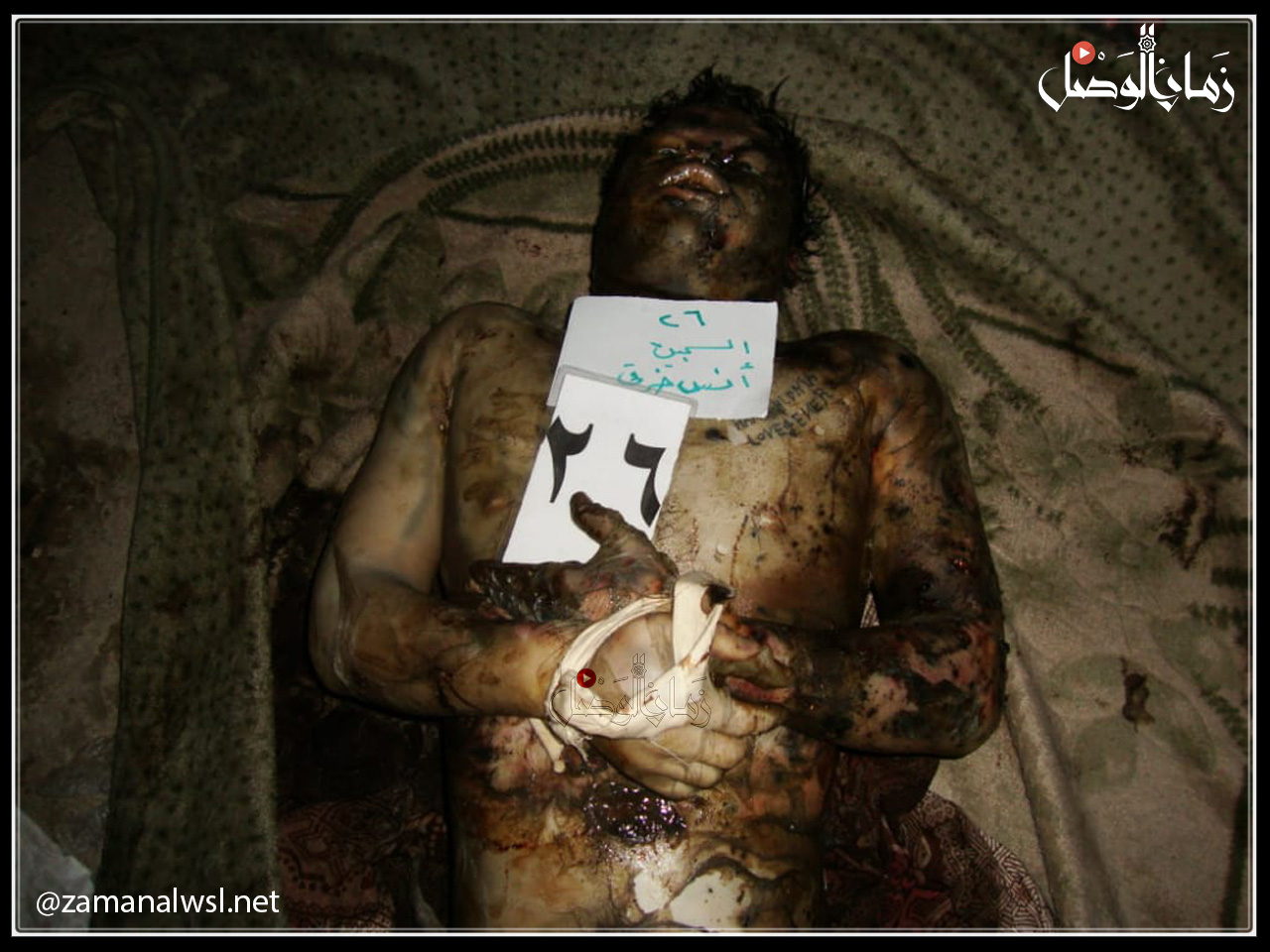
1- Anas Kharqi, of Aleppo city, his body was numbered as 26 by the regime security. His body is full of traces of burns, wounds and severe deformities that covered him from his face to his feet.
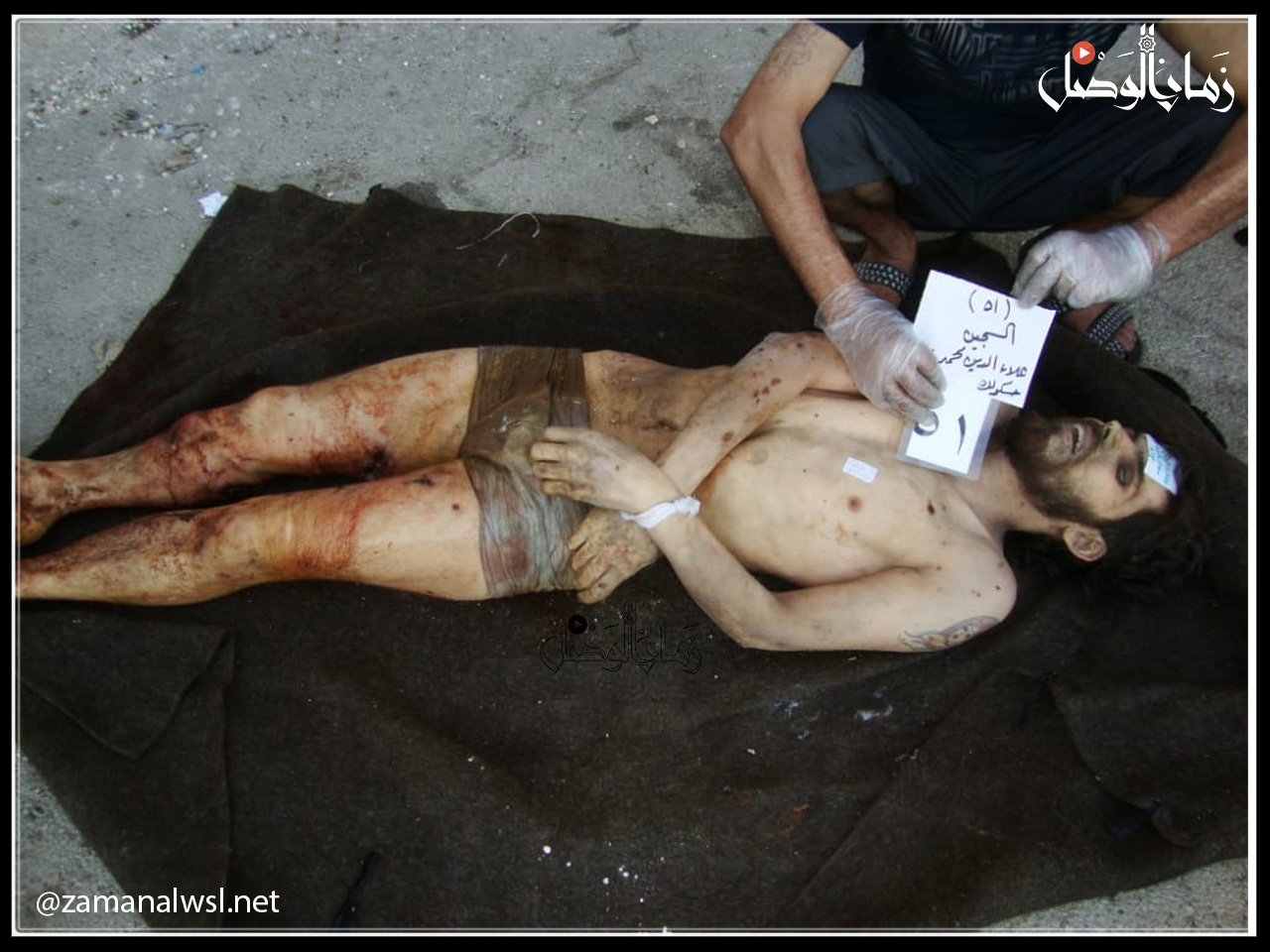
2- Aladdin Mohamed Haskoulak, of Al-Sukari neighborhood in Aleppo, number 51, emaciated body and red-tinted legs, most likely as a result of blood flowing from an apparent wound in the middle of his thigh, most likely caused by a gunshot wound.
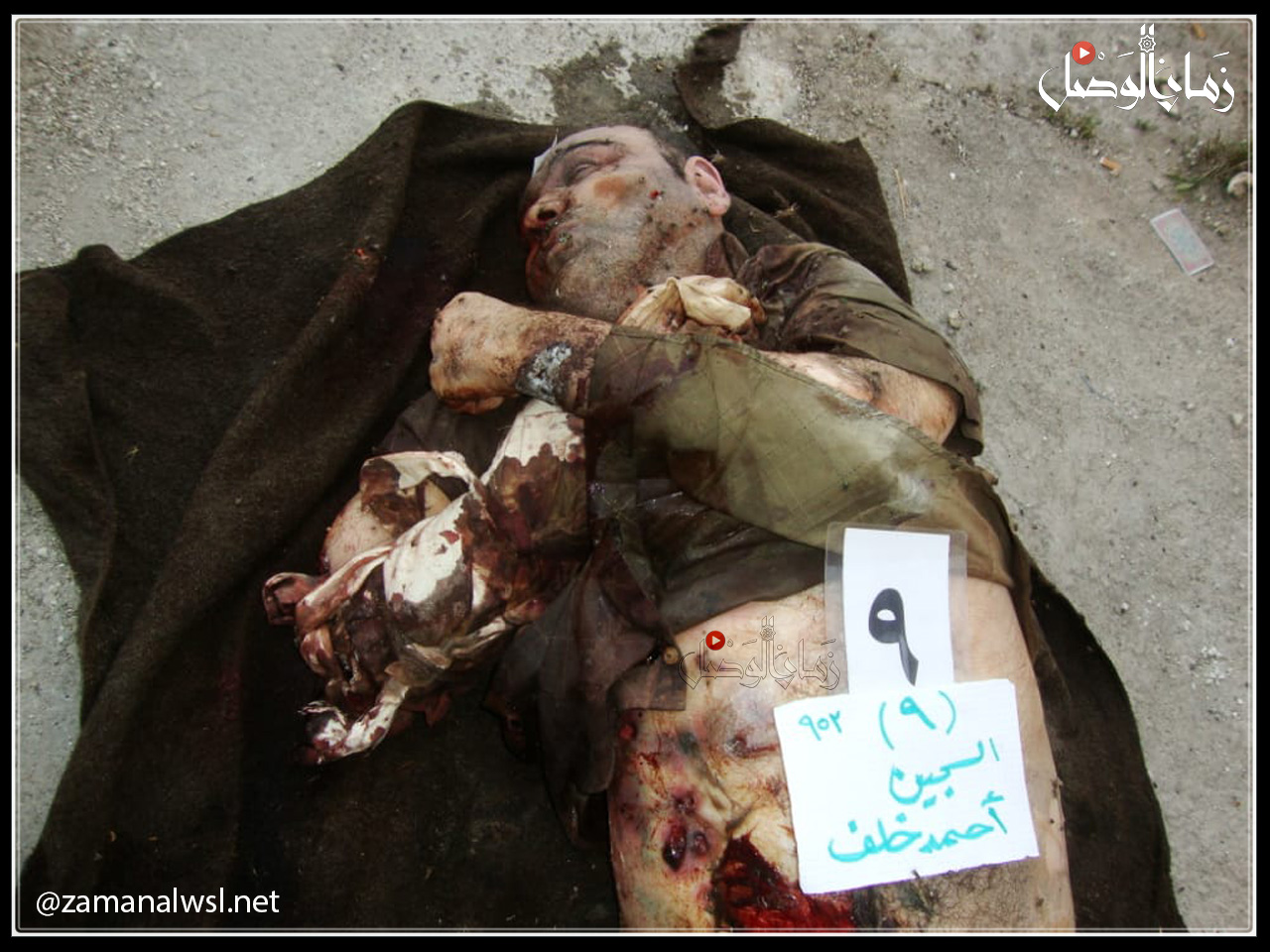
3- Ahmed Khalaf, of Haritan town, given number 9, deformed body and one arm almost completely, with a large and sunken hernia in the subumbilical part.
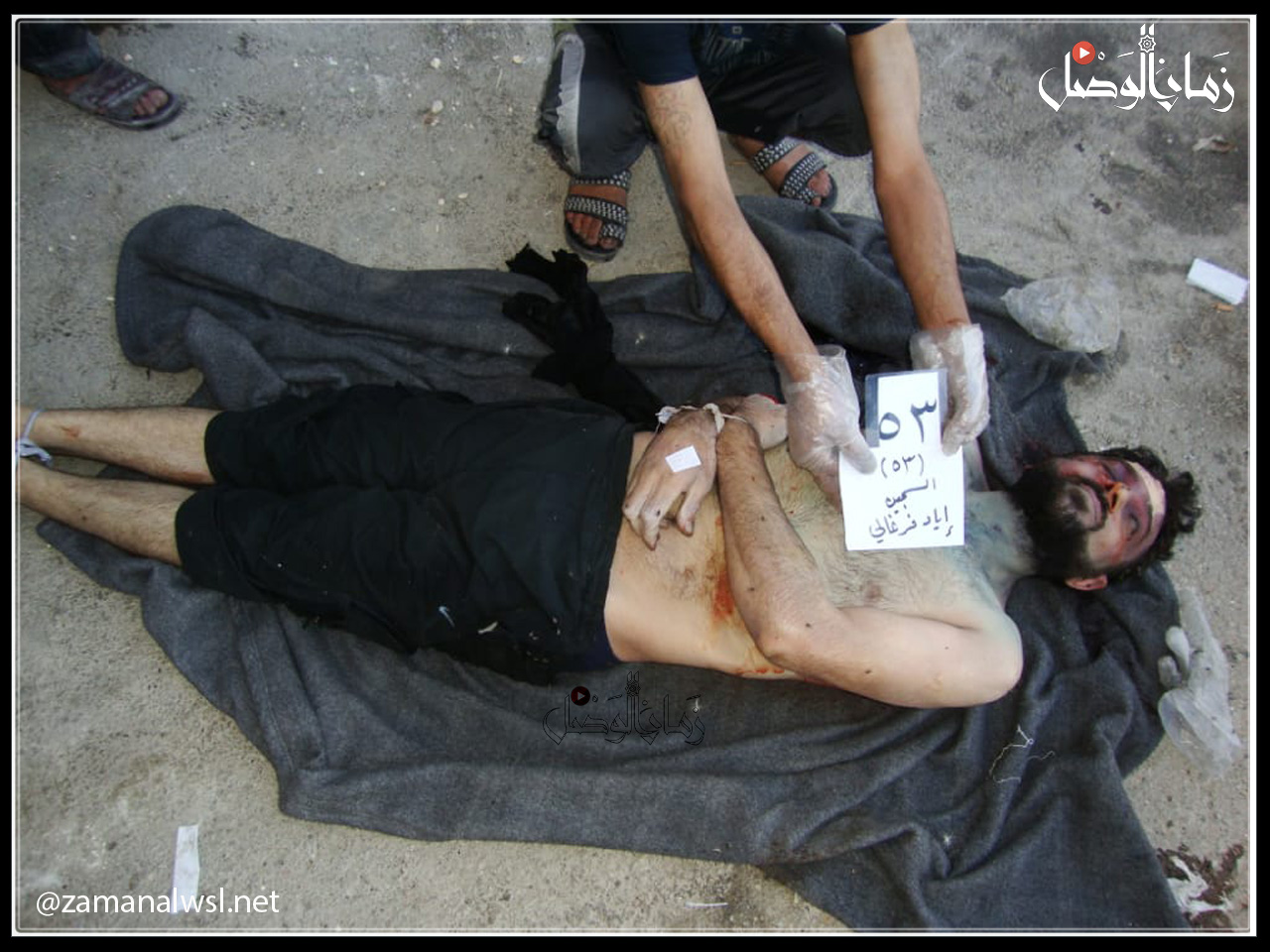
4- Iyad Farghali, of Damascus, who was given the number 53, and traces of abrasions appeared on his face, especially around the eyes.
Names and photos of Syrian army personnel who run Aleppo Central Prison and suspect of war crimes
In February, 2015, Assad's army ended a 13-month-long rebel siege of Aleppo central prison after a fierce battle.
Following its win, the regime focused remarkably on what it called the “heroics”, “epics” and “legends” of army soldiers in the prison, knowing that some of its soldiers and militias suffered a more severe siege, but they were not given a tenth of what the regime gave to Aleppo prison.
Perhaps the secret of this interest lies in the point of the sectarian majority that was in control of the prison, according to the defected photographer “Abu Ahmed,” and perhaps also in Assad’s appreciation for this group of criminals who were able to carry out what the tyrant desires, “with great dedication.”
Zaman al-Wasl publishes a list of the names of the most important officers who were at the head of their work in Aleppo prison, during the massacres committed during the prison siege, knowing that the ranks mentioned next to their names are their ranks at that time, not now, and they are:
Colonel Nidal Asbar Al Abdullah.
Lieutenant-Colonel Moaz Kizawi.
Captain Hussein Haj Ali.
Captain Raed Nadaf.
Lieutenant Jaafar Zuwaid (killed).
Lieutenant Jules Salloum (killed).
First Lieutenant Waheed Darwish.
Lieutenant Aws Eidi.
First Lieutenant Amjad Hassan.
Lieutenant Abdel Hamid Tammo (killed).
Lieutenant Ahmed Ibrahim.
Aleppo Prison's images have recalled back the shocking 53,275 torture photographs which smuggled out of Syria by a military defector code-named Caesar in August 2013.
Human Rights Watch received the full set of images from the Syrian National Movement, a Syrian anti-government political group that received them from Caesar. The report focuses on 28,707 of the photographs that, based on all available information, show at least 6,786 detainees who died in detention or after being transferred from detention to a military hospital.
Most of the 6,786 victims shown in the Caesar photographs were detained by just five intelligence agency branches in Damascus, and their bodies were sent to at least two military hospitals in Damascus between May 2011, when Caesar began copying files and smuggling them out of his workplace, and August 2013, when he fled Syria, according to HRW.
Zaman al-Wasl considers this report as a public notice to all concerned human rights organizations and judicial authorities concerned with tracking down the perpetrators and holding them accountable.
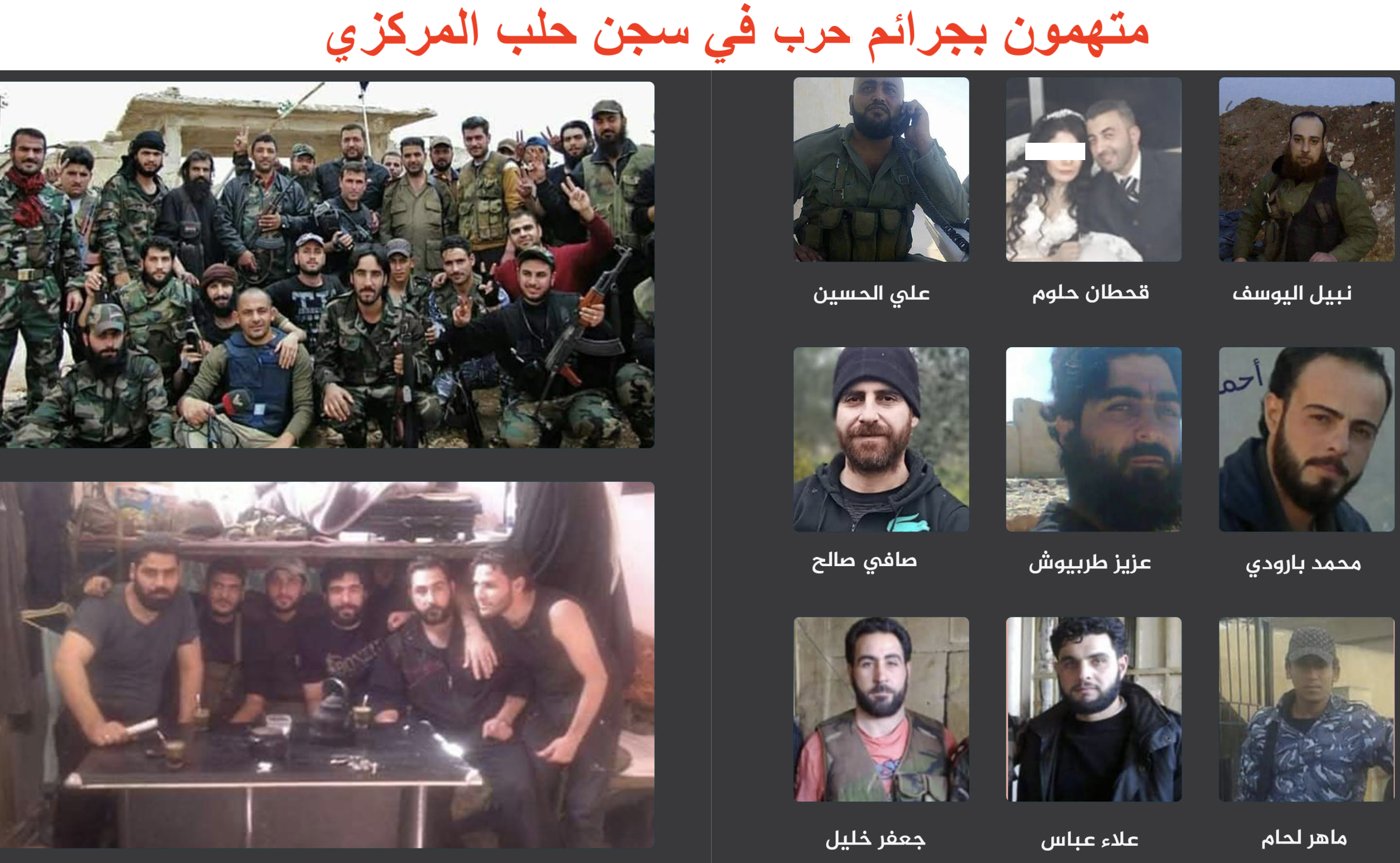
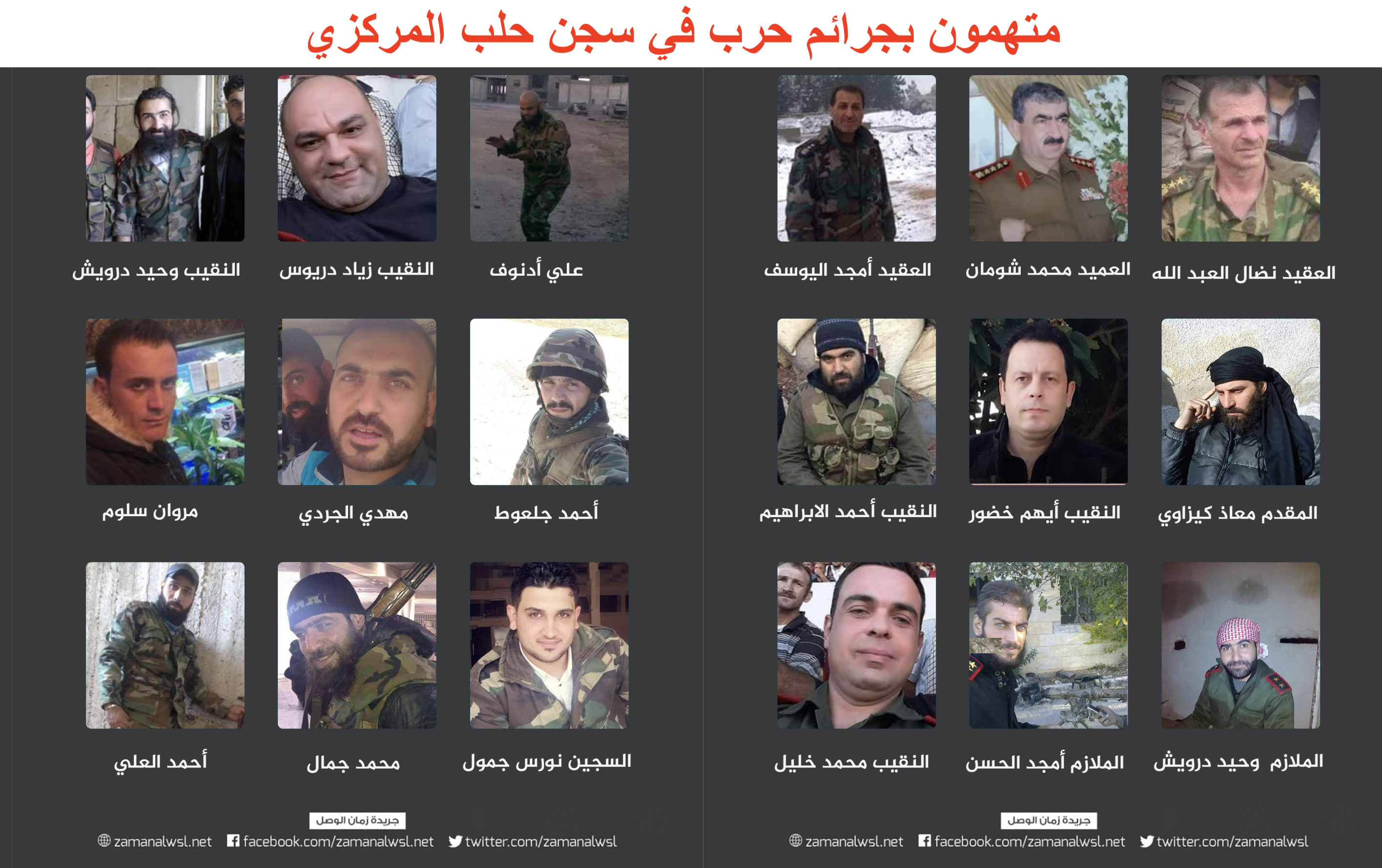
















Comments About This Article
Please fill the fields below.